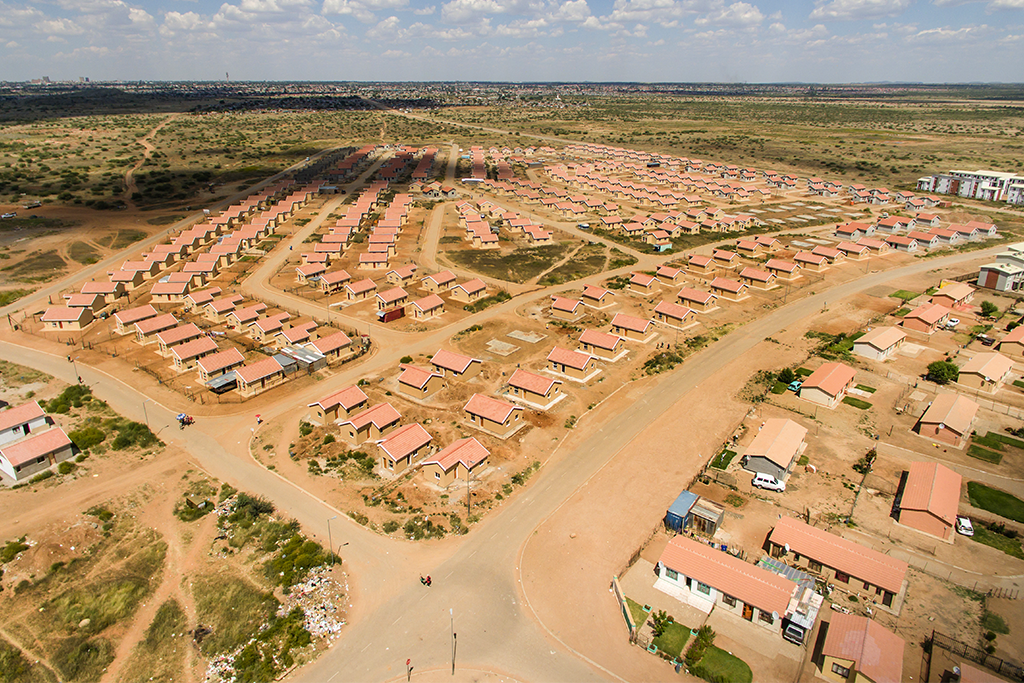Featured
Digital trends transform construction
Information modelling, enhanced surveyance and VR will become commonplace tech in building, writes Gap Infrastructure CEO ROELOF VAN DEN BERG.
Share
- Click to share on Twitter (Opens in new window)
- Click to share on Facebook (Opens in new window)
- Click to share on LinkedIn (Opens in new window)
- Click to email a link to a friend (Opens in new window)
- Click to share on Reddit (Opens in new window)
- Click to share on WhatsApp (Opens in new window)
- Click to share on Pinterest (Opens in new window)
Construction development in South Africa is speedily moving away from the traditional graph paper and pencil towards the digital. Most companies have already adopted laptops, mobile tablets, electronic measuring tools, and drones to simplify a myriad of onsite tasks which have, historically, been time consuming and often imprecise.
But as the world at large grows more digitised and digitalised every year, the question is what will the future of construction and infrastructure development look like, based on today’s rapidly advancing technology?
Backed by knowledge and industry expertise accrued over decades in the infrastructure development industry, I predict that the following three trends will become commonplace for construction businesses over the next few years:
1. Building Information Modelling
Although Building Information Modelling (BIM) has been around for some time, only a few larger construction and infrastructure development companies have recently begun using this technology to its full potential.
BIMs are intuitive three-dimensional modelling computer programmes which allow all project members, from executive management to architects and engineers, to design and manage projects quickly, easily, and efficiently. This enables us to instantly share pertinent project information from anywhere, or manage the entire project throughout its lifecycle in one location.
Continued advancement in cloud technology, coupled with BIMs, will also keep simplifying the way project stakeholders access and interact with real-time process information, enhancing transparency between provider and client.
BIM systems are largely used in construction and infrastructure projects for coordination or clash detection, visualisation, project planning, estimation, creation of virtual mock-ups, and prefabrication, among others.
GIC has gone a step beyond the basic BIM to employ a 5D BIM system which adds both time and cost related data to 3D BIM models, providing more value to both contractors and clients. With 5D modelling, the total cost of a project is easily determined by multiplying each component used by its cost, without requiring significant additional manual input from the contractor and saving time.
The use of BIM systems will see a sharp rise over the next few years by not only large companies, but will also be used more frequently by small to medium businesses.
This is particularly as the technology advances, accessibility is improved, and BIM systems become a necessary tool in an increasingly competitive market.
2. Enhanced surveyance technology
Projects are regularly delayed, and unexpected costs accrued during the groundworks phase of projects as construction crews happen upon unexpected underground geological features.
To detect subsurface obstructions before commencing with operations, cutting-edge enhanced surveyance technology such as light detection and ranging (LiDAR) scanning is used to create accurate 3D area models.
Combined with subsurface surveyance systems such as ground-penetrating radar (GPR), LiDAR is capable of mapping both above and underground features.
Geologic mapping technology is rapidly advancing, providing us with clearer and more accurate images than ever before to prevent any surprises when we first begin digging on sites. Combined with drones and intelligent 3D modelling programmes, this can prevent unnecessary delays and thousands of rands going to waste.
3. Virtual and augmented reality
Once thought to be little more than a fad among tech-enthusiasts, virtual reality (VR) and augmented reality (AR) technology have advanced to the point that they are beginning to add immense value to the construction industry.
VR, which requires peripherals such as VR headsets or glasses, creates a traversable digital environment, such as a worksite or finished building, around the user. AR does not require a headset and can be used on any type of smartphone or tablet device, rendering environments or objects on-screen, layered over images of the real world by making use of the device’s camera.
While not yet in common use, AR technology makes it possible to digitally design a building, load it onto your phone as an AR programme, point it at the physical location where you want to build, and display it to your team or client.
VR can be incredibly useful for training workers to use complicated machinery or, by coupling the technology with advanced simulation programmes, preparing employees to react correctly in dangerous situations.
The integration of advanced technology into the construction and infrastructure industry is unavoidable, but through continuous innovation, the value that digital technology can create for developers and clients is boundless.
Share
- Click to share on Twitter (Opens in new window)
- Click to share on Facebook (Opens in new window)
- Click to share on LinkedIn (Opens in new window)
- Click to email a link to a friend (Opens in new window)
- Click to share on Reddit (Opens in new window)
- Click to share on WhatsApp (Opens in new window)
- Click to share on Pinterest (Opens in new window)
| Thank you for Signing Up |

















